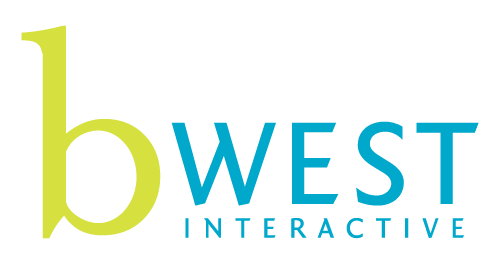If you are not 100% sure about the answer to this question, NOW is the time to find out and do something about it.
In the ten years that bWEST has been operating, we have worked with hundreds of clients on their online marketing projects from website design and online sales (eCommerce) to social media, email marketing, and online advertising.
Working with that many companies, you end up seeing a lot of the inner workings of the business, and the history behind their digital assets.
I have to say that it’s pretty shocking to see just how little control some business owners have over their extremely valuable digital assets. It’s even more shocking to see how some marketing agencies treat business assets and the downright unethical practices being used to, in some cases, hold business owners hostage – more on that later.
It would be comparable to you needing work done on a company car but not having the keys and not knowing where they are, or who has them. Sounds crazy, right? And your digital assets are much more valuable than a company car.
Before we get into the meat and potatoes of the matter, let’s define what digital assets are. If you own or work for a small business, chances are that you have a minimum of 5-6 of these assets. And in some cases, all 20 plus of them.

Digital assets
- Domain name ( e.g. companyname.com or in our case bwest.ca )
- Domain registrar (GoDaddy, DomainPeople, etc. there are hundreds)
- Website hosting (Sometimes the same as the domain registrar)
- SSL certificate (usually comes with the website hosting)
- Website Control Panel (commonly referred to as the cPanel)
- Website FTP access
- WordPress access (or other CMS, Drupal etc)
- Google Business Page
- Google Analytics
- Google Adwords and pixel
- Ecommerce Application (if applicable)
- Facebook Business Manager
- Facebook Advertising and FB pixel
- Social media accounts (Twitter, Facebook page, Instagram, etc)
- Social Media Management tool e.g. Hootsuite
- Marketing email e.g. MailChimp, CampaignMonitor, etc.
- Often with large subscriber lists and valuable data
- Company email server
- Other accounts include stuff like
- Canva
- iStock
- Basecamp
In the course of working with clients, we always start with a Needs Assessment document that the client fills out. The document includes high-level stuff like their business and marketing objectives and tactical items like domain names and access to Google Analytics (assuming they have it installed).
From there, we will often conduct one or more of a variety of audits that we offer. The most common is an SEO (search engine optimization) Audit. Other audits include:
- Google Analytics Audit (this is included in the SEO Audit)
- Website Heuristics Audit
- WordPress Audit
- Social Media Audit
- Email Marketing Audit
- Online Advertising Audit
Conducting these audits requires access to the website (WordPress and FTP) and a few other areas. This is where we start to discover who owns and/or manages what assets. Most clients won’t know what FTP is, and that’s fine; they don’t need to. Usually, they can get that from the website hosting company, assuming they know who that is and how to get in touch with them. We can easily find out who is hosting the site, but they will only talk to the owner of the website. Business owners should have an email from the website host with this information – FTP and cPanel, at minimum.
We live in an era where a company website is vital to the health and vitality of the business. If you have an eCommerce business, the website is mission-critical.
We recently started working with a client that was doing 90% of its business online but didn’t have any analytics installed on the site. They had no idea where the customers were coming from, how they got to the website, or how effective any of their marketing campaigns were.
In another case, the client wasn’t sure if they owned the domain name that their website ran on and was named after their business. Losing that could have potentially sunk the business.
The reason that they didn’t know if they owned the domain, or even the website itself, is that they were locked into an agreement with a large national organization – you know, the one that used to print thick books full of phone numbers.
It turns out that they did own the domain name but nothing else, so in essence, they were renting the website as well as the website, and traffic going to it and the Google domain authority the site had generated over the years.
We have spent hundreds of hours helping clients track down access to various aspects of their business, hours that they could have saved by simply keeping track of their assets, and login information.
As a business owner, it is your responsibility to ensure you own and control these assets. This is even more important if you are buying or selling a business.
- Domain name – this is critical
- Website hosting (FTP and cPanel)
- WordPress (Content Management System)
- Google account – which usually controls
- Gmail
- Google analytics
- Google Business page
- Adwords
- Calendar
- G-Drive
- YouTube
- Facebook Page and Facebook Business Manager (if applicable)
Taking care of your digital assets
Here are a few best practices for managing your digital assets.
- Make a list of all your digital assets and store it in a safe place. Update the list as necessary when you acquire new assets. Include expiry dates for things like domain names. We have seen companies almost lose domains, and websites, due to the domain name expiring and them not receiving the notification emails.
- Within the list of assets include the login information, usually user name and password, however they can sometimes include a PIN or answer to specific questions (favourite dog, etc). Keep this is a very safe place where others can’t find it but you can.
- Create a generic email address e.g. info@YourCompanyName.com and use it for certain account registrations. Have that email address forwarded to you and any other officers of the company. It can also be advantageous to use a @gmail address for this in case you lose access to the company email or it goes down.
- Plan for the Future. What happens to your company’s digital assets if something happens to you? If your business is a partnership, the digital assets need to be accounted for in the partnership agreement. If you are a sole-proprietor or family business, include these assets in your succession plans.
- Back it up! It’s important to use a backup system to protect all of your digital assets. We recommend daily backups to the cloud using systems like Backupify or our own Peace of Mind package.
- Establish Protocols. Now that you have created a system to manage your digital assets document it. Set up specific ongoing tasks for backups and milestones for reviews and updates. A large portion of your business is online; keep it running smoothly by protecting your digital assets.
If you’d like help creating a Digital Asset Management system, contact us here or give us a call at 250-508-7761.





